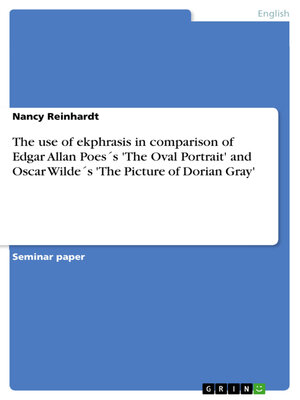The use of ekphrasis in comparison of Edgar Allan Poes´s 'The Oval Portrait' and Oscar Wilde´s 'The Picture of Dorian Gray'
ebook
By Nancy Reinhardt

Sign up to save your library
With an OverDrive account, you can save your favorite libraries for at-a-glance information about availability. Find out more about OverDrive accounts.
Find this title in Libby, the library reading app by OverDrive.



Search for a digital library with this title
Title found at these libraries:
| Library Name | Distance |
|---|---|
| Loading... |
Seminar paper from the year 2007 in the subject English Language and Literature Studies - Literature, grade: 2,3, Technical University of Darmstadt (Institut für Sprach- und Literaturwissenschaft), course: Hauptseminar "Literature and Visuality", language: English, abstract: Two stories, two authors, two epochs – to compare them will be the purpose of this paper by focussing on the two portraits which are each the important element of their story. At the same time, confusing and paradoxical relationships between art, life and death constitute the thematic centre of both stories. The portraits, as pieces of visual art, are presented in a verbal or ekphrastic form. Why and how are they represented with words? To answer this questions I will first give an overview about ekphrastic theory, second classify the narrative situations, third compare the relations of observer and observed subject and finally by the discussion of their function and importance.







